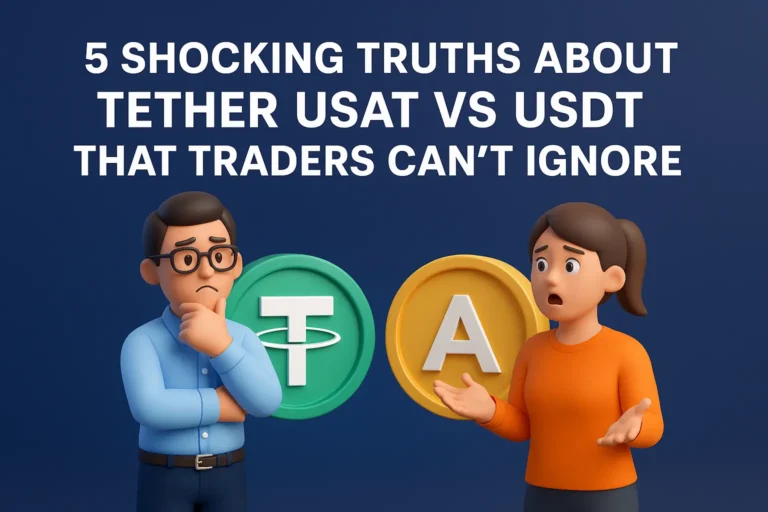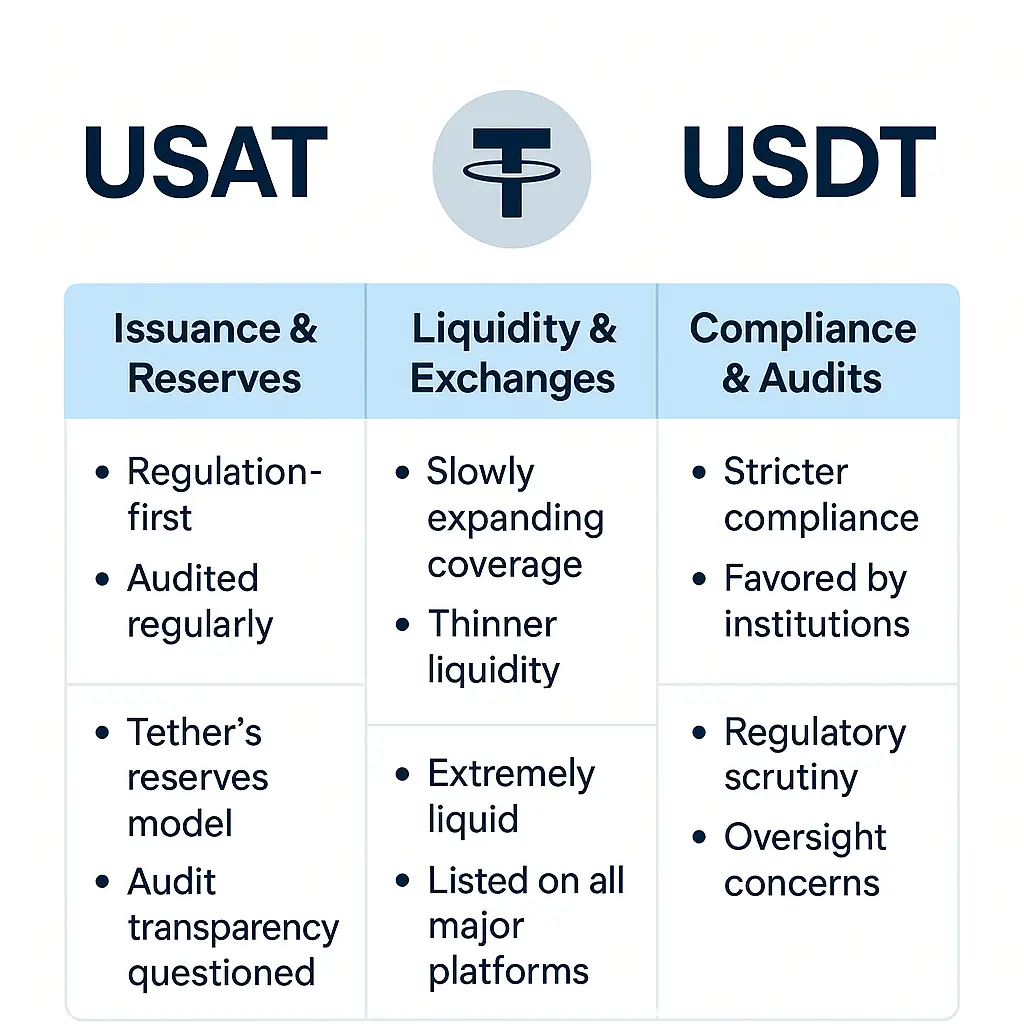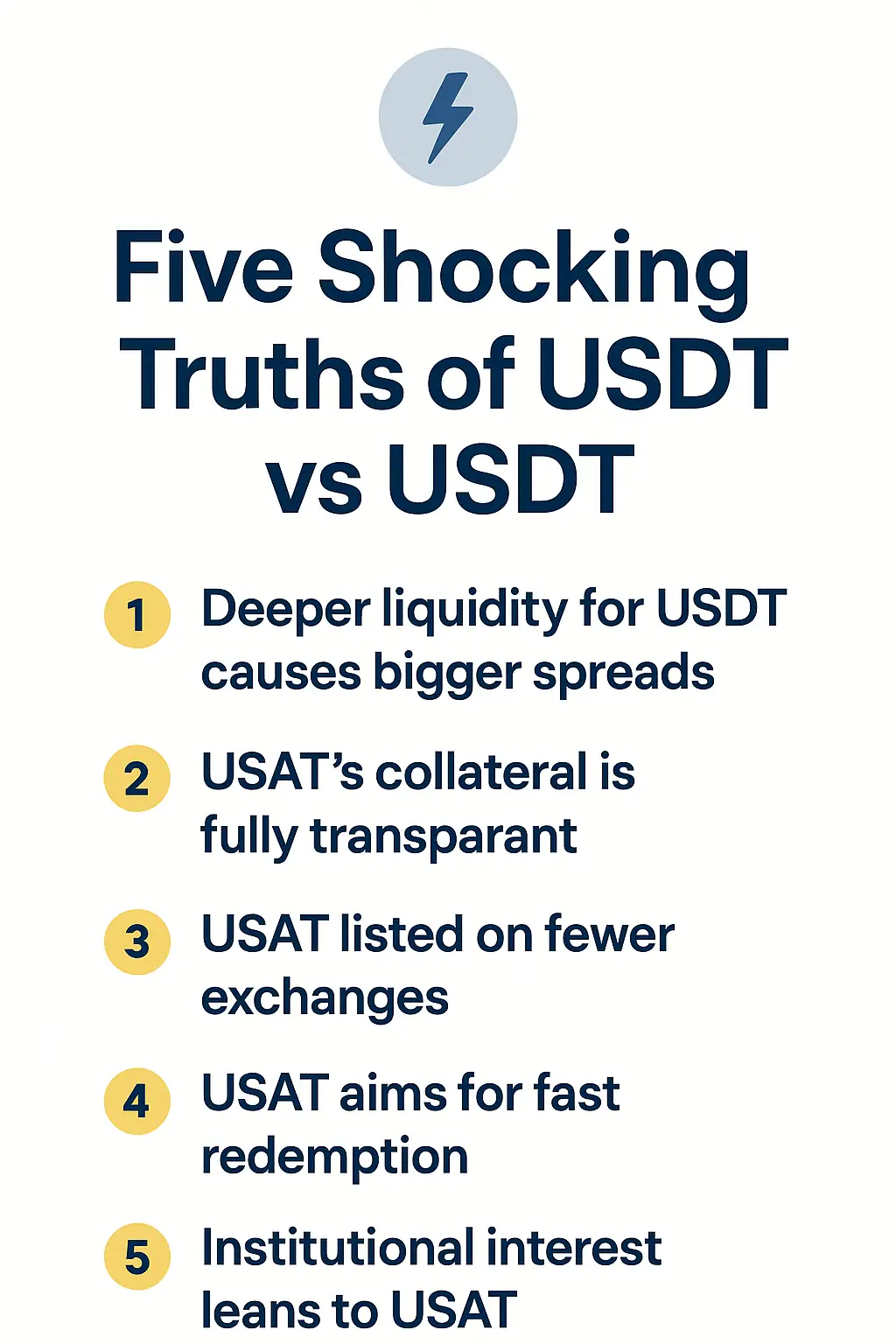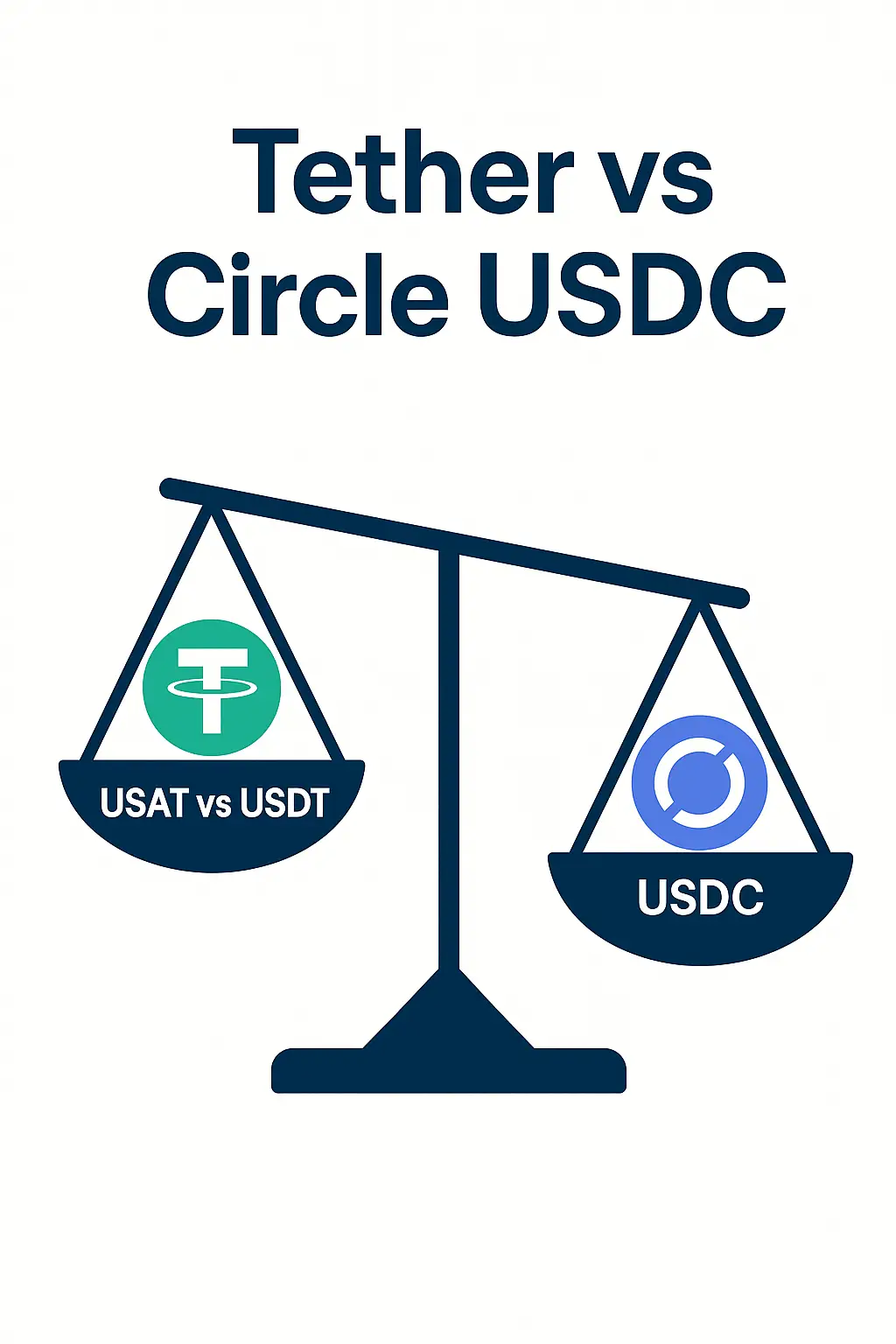CoinTelegraph Coverage
Reports emphasize regulatory uncertainty. They note that USAT could benefit if the U.S. or EU moves toward favoring licensed issuers. However, liquidity depth remains USDT’s clear edge.

Last updated: September 15, 2025
If you actively trade stablecoins, understanding Tether USAT vs USDT isn’t optional—it’s mission-critical. This guide distills the noise into a clear trader’s playbook: where these tokens can differ (issuance, reserves, compliance), how those differences can impact spreads, and what it means for execution, liquidity, and risk management. By the end, you’ll know exactly how to position around Tether USAT vs USDT in fast markets.
Educational content, not financial advice. Always perform your own research and consider professional guidance before trading.
Most traders already know USDT, the world’s largest stablecoin issued by Tether. But the new entrant USAT has started making waves in recent USAT crypto news. While both tokens claim to be dollar-pegged, they diverge in important ways:
To help traders compare, we reviewed how competitors and media outlets are covering this Tether stablecoin comparison. Here’s what we found:
Reports emphasize regulatory uncertainty. They note that USAT could benefit if the U.S. or EU moves toward favoring licensed issuers. However, liquidity depth remains USDT’s clear edge.
CryptoNews highlights volatility in smaller trading pairs when USAT is used. They caution traders about potential slippage and recommend pairing strategies with BTC or ETH to reduce spread risk.
📌 Related: Learn how stablecoins shape short-term price swings in our day trading vs swing trading guide .

When looking at USDT vs USAT explained through the eyes of an active trader, the differences aren’t just technical—they directly affect execution, spreads, and portfolio risk. Here are five shocking truths that most retail traders overlook:
💡 Key takeaway: A Tether stablecoin comparison isn’t just about brand names—it’s about liquidity, compliance, and how those impact your risk-adjusted returns.

For further analysis, compare how other issuers stack up in our crypto vs stocks breakdown. Also see regulatory context in SEC stablecoin guidance.
Don’t just trade in the dark. Get our latest crypto and stock alerts delivered daily so you can move before the crowd. Compare insights on Tether USAT vs USDT and beyond.
Get Free Alerts TodayAfter diving into liquidity, compliance, and adoption, it’s clear that Tether USAT vs USDT isn’t just a technical debate—it’s shaping where money flows in the broader crypto market. To highlight the differences, here’s a structured comparison:
| Aspect | USAT ✅ | USDT ❌ |
|---|---|---|
| Liquidity Depth | Thinner books, improving gradually | Deep liquidity across all major venues |
| Regulation | Designed for regulated stablecoin launch | Still criticized for opaque compliance |
| Redemption | Faster fiat redemption claims | Slower redemption windows |
| Institutional Interest | Strong appeal to regulated investors | Still dominant but under scrutiny |
✅ Traders who anticipate regulatory clarity may lean toward USAT, but for immediate liquidity, USDT remains the king.

Bloomberg outlines how regulation could accelerate stablecoin adoption if governments bless compliant tokens like USAT.
CoinDesk compares Tether USAT vs USDT alongside Tether vs Circle USDC, noting institutional behavior is shifting toward audit-friendly tokens.
🔗 For more trading strategies beyond stablecoins, see our stock trading strategies guide.
The core difference lies in approach: USDT dominates liquidity but faces ongoing scrutiny over reserves, while USAT positions itself as a regulated stablecoin launch with stronger compliance and audit focus.
Safety depends on your risk lens. Institutions may view USAT as safer due to regulation, while traders value USDT’s unmatched liquidity and proven market dominance. Always assess counterparty and redemption risk before holding either.
As of now, USDT is widely available across all top-tier platforms. USAT is still rolling out, so liquidity may be limited to select exchanges. Monitor official exchange listings and USAT crypto news for updates.
Similar to Tether vs Circle USDC, the battle is between liquidity and compliance. USAT mirrors USDC’s regulated approach, while USDT continues to dominate global volume despite criticism.
Active traders may prefer USDT for immediate execution, while long-term investors and institutions may lean toward USAT if regulators endorse it. A diversified stablecoin strategy often provides the best balance.
The debate around Tether USAT vs USDT isn’t just noise—it shapes where liquidity, regulation, and capital flow in the crypto ecosystem. Traders who grasp the Tether stablecoin comparison early will be better positioned to act before major shifts occur. Whether you prioritize speed, compliance, or redemption risk, staying informed is the key edge.
🔗 For more insights, explore our guide on penny stock alerts and how market signals can sharpen your trading decisions.
Don’t miss key moves in stablecoins, stocks, and crypto markets. Join thousands of traders receiving actionable alerts every day from TradeStockAlerts.com.
Subscribe Free Today